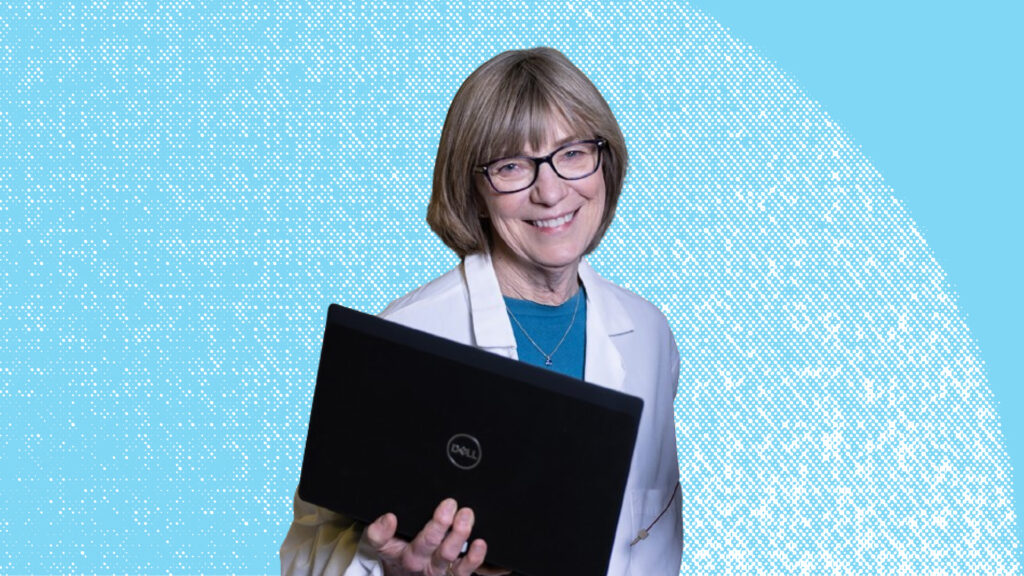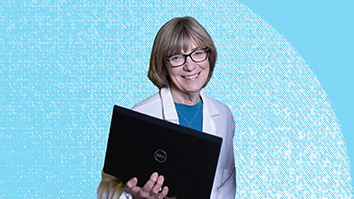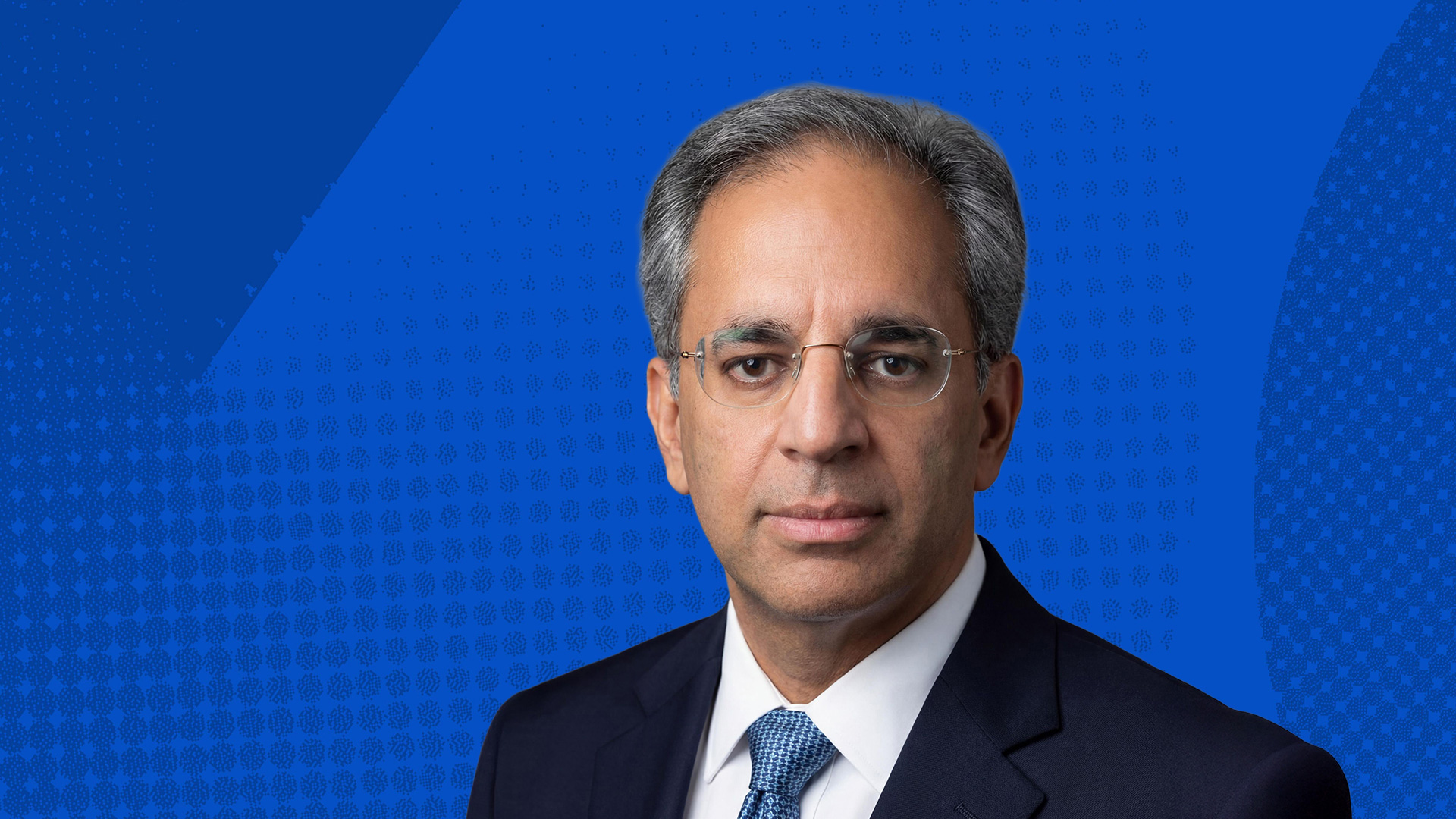
Leading the effort to make sure effective therapies progress to human trials.
Developing a new drug is only the beginning. As senior director of preclinical development and a principal investigator for SRI’s Biosciences Division, Carol Green works to make sure promising early-stage pharmaceuticals designed to treat neurological diseases, infections, cancer, and other conditions make it to the Food and Drug Administration (FDA) for potential approval. Also on her agenda — determining the safety and efficacy of countermeasures designed to protect the populace from chemical threat agents.
Here, Green discusses in vitro tissue models she was instrumental in designing, her four-decade commitment to SRI, and her passion for problem-solving.
I am one of several SRI principal investigators that manage National Institute of Health (NIH) contracts to help advance new drugs for FDA approval. Scientific investigators come to SRI because we have the expertise to study drugs or compounds to be approved for use in human clinical trials and eventually get them to market, with the ultimate goal of saving lives. We work on many drugs from new anti-infectives to medications designed to treat neurological diseases such as Alzheimer’s disease and the pain associated with them. I’m also the primary investigator on one contract that relates to countermeasures against chemical threats, such as nerve agents or toxins used by terrorists or military groups.
Sharing deep roots in farming
I’ve always loved science, but it took time to figure out what I wanted to do. I was born and raised in southern Indiana on a farm that was homesteaded by my family generations ago. My grandfather and father managed a 500-acre farm and raised typical midwestern animals and crops —cattle, hogs, corn, hay, and more (the closest I come to that tradition today are the French Angora and American Fuzzy Lop rabbits I raise and show). My grandmother also grew up on a farm where her job was to feed the farm hands, cooking on a wooden stove. She didn’t have a driver’s license, nor her own money, but was a critical part of the farm.
A generation later, my mother wanted to attend college, but her parents couldn’t afford it, so she made a career as a farmer’s wife, also serving as the family accountant. Despite my parents not going to college, they always supported advanced education for my brother and me. I graduated with a bachelor’s degree in psychology from North Carolina State University in 1972 and thought I’d go into medicine or science. When my husband and I moved to Sunnyvale in 1974 for his work, I took additional courses at San Jose State University (SJSU) to prepare for such a career.
“I was fascinated about what made a chemical toxic, and decided to apply to the pharmacology and toxicology graduate program at UC Davis.”
My path became clear when my cell biology professor at SJSU, who was interested in toxicology, taught his students the basics. At the time, I knew nothing about toxicology and had never imagined there were jobs in the field. I was fascinated about what made a chemical toxic, and I decided to apply to the pharmacology and toxicology graduate program at UC Davis. I ended up working with a professor who was developing a lab focused on in-vitro toxicology – research that is done at the cell level, not in the animal.
At the time, new methods were being developed to isolate individual cells from the liver of animals and use them to study how the liver metabolized toxicants or environmental chemicals, causing cell death. There, I studied two toxic compounds present in mold and plants.
Developing the world’s first human liver research facility
After receiving my PhD in toxicology and pharmacology, I was excited to learn that there was an opening for a post-doctoral fellowship in Dr. Charles Tyson’s lab in the Life Sciences Division at SRI in 1981. In our early research, we used liver cells isolated from human tissue to better understand how humans respond to toxins and new drugs.
At the time, this was a brand-new field of research and it was challenging to get access to human tissue. Based on my experience and SRI’s qualifications, we were awarded an NIH-funded contract to start the world’s first Human Liver Research Facility. This enabled us to store liver tissue collected for human transplantation so that we could help people who couldn’t obtain a full liver transplant.
This tissue bank operated at SRI for many years. We performed many studies with cultured cells and provided liver specimens and cultured hepatocytes to researchers who required these materials for their work. We taught other scientists how to isolate and culture cells themselves, advancing techniques. It wasn’t a well-known process at the time, but it’s routinely performed now. Our tissue bank no longer exists, but as a result of SRI’s contributions to the field, there are now companies that provide primary hepatocyte cultures from multiple species.
Advancing clinical trials to advance 25 new drugs to market
I continue to work with many talented SRI scientists, performing the studies required to evaluate the safety of potential new drugs and therapies so they can advance in the development pipeline. The studies we perform are critical in demonstrating to the FDA that these products are safe enough to proceed to clinical trials. To date, our work has advanced over 225 potential drugs to clinical trials and 25 new drugs to the market.
I’ve been at SRI for 42 years and have stayed because I love solving problems, and I like the commitment of staying with a company and its people. I’m proud of the work SRI does, not just in drug development, but in all its areas of research, and it’s important to me to show others – particularly young women – that you can become a leader in a group. This is an exciting place to work!



